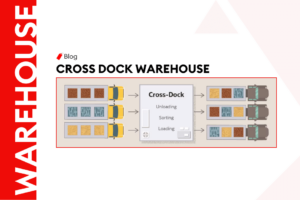Home » Services » Door to Door » IMEA » India » Payment India
Bridging Markets, Building Futures: Trade with Ease Between UAE and India
UAE-India
Payment
This page provides essential details on secure payment methods, currencies, and typical payment terms for smooth transactions between the UAE and India.
Payment Methods
For secure transactions between the UAE and India, businesses typically use bank transfers (SWIFT), Letters of Credit (LC), and Documentary Collections (DC).
Trade participants often use escrow accounts for high-value transactions to protect both parties until all terms of the trade agreement are fulfilled.
Currency
The most common currencies used in UAE-India trade are the UAE Dirham (AED) and the Indian Rupee (INR). Transactions are often denominated in US Dollars (USD) for ease of international trade.
Currency exchange rates fluctuate daily, influenced by global markets, central bank policies, and geopolitical events.
Payment Terms
Typical payment terms in UAE-India trade include 30-60 day credit periods. These terms can be negotiated, depending on the relationship between trading partners, the nature of goods, and market conditions.
Frequently Asked Questions (FAQ)
What are the cargo handling capacities of major airports in India involved in UAE-India trade?
Indira Gandhi International Airport can handle over 1.8 million metric tonnes annually and features state-of-the-art cold storage facilities. Chhatrapati Shivaji Maharaj International Airport supports over 591 thousand metric tons of cargo each year and is equipped with dedicated freight terminals, and lastly, Kempegowda International Airport facilitates around 150,000 tonnes per year and offers extensive warehousing with a high-tech security system.
What are the main seaports in India for cargo operations between UAE and India, and what are their capabilities?
Mundra Port in Gujarat can handle over 338 million metric tonnes (MMT) of cargo annually and is the largest container port in India. Nhava Sheva (Jawaharlal Nehru Port) in Maharashtra handles over 5 million TEUs annually and has advanced deep-water berths, and lastly, Chennai Port in Tamil Nadu facilitates roughly 3,000,000 TEUs of cargo annually and has specialized automotive cargo handling capabilities.
What are the import duty rates and tax structures in the UAE and India for goods traded between the two countries?
In the UAE, goods are subject to customs duties ranging from 0% to 5%, with a standard VAT rate of 5%. Excise duties are higher for specific goods like tobacco and alcohol. In India, import duties vary by product, with rates ranging from 0% to 100% for luxury goods. Goods and Services Tax (GST) rates are 5%, 12%, 18%, or 28%, depending on the product category.
What documents are required for importing goods into India?
Essential documents for importing into India include a Commercial Invoice, Certificate of Origin, Bill of Lading or Airway Bill, Import License (if applicable), Packing List, Insurance Certificate, Customs Declaration Form, and an Importer Exporter Code (IEC) Certificate.
What are the typical payment methods and terms for trade between the UAE and India?
Common payment methods include bank transfers (SWIFT), Letters of Credit (LC), and Documentary Collections (DC). High-value transactions may use escrow accounts. Typical payment terms include credit periods of 30-60 days, which can be negotiated based on the trade relationship and market conditions. Transactions often use the UAE Dirham (AED), Indian Rupee (INR), and US Dollars (USD) for ease of international trade.
Related Articles
Anything you need, We’re here to Help

Chat With Us
Effortlessly schedule your next shipment with us for reliable and timely delivery.

Request a Quote
Receive a personalized shipping quote that meets your specific logistic needs.









